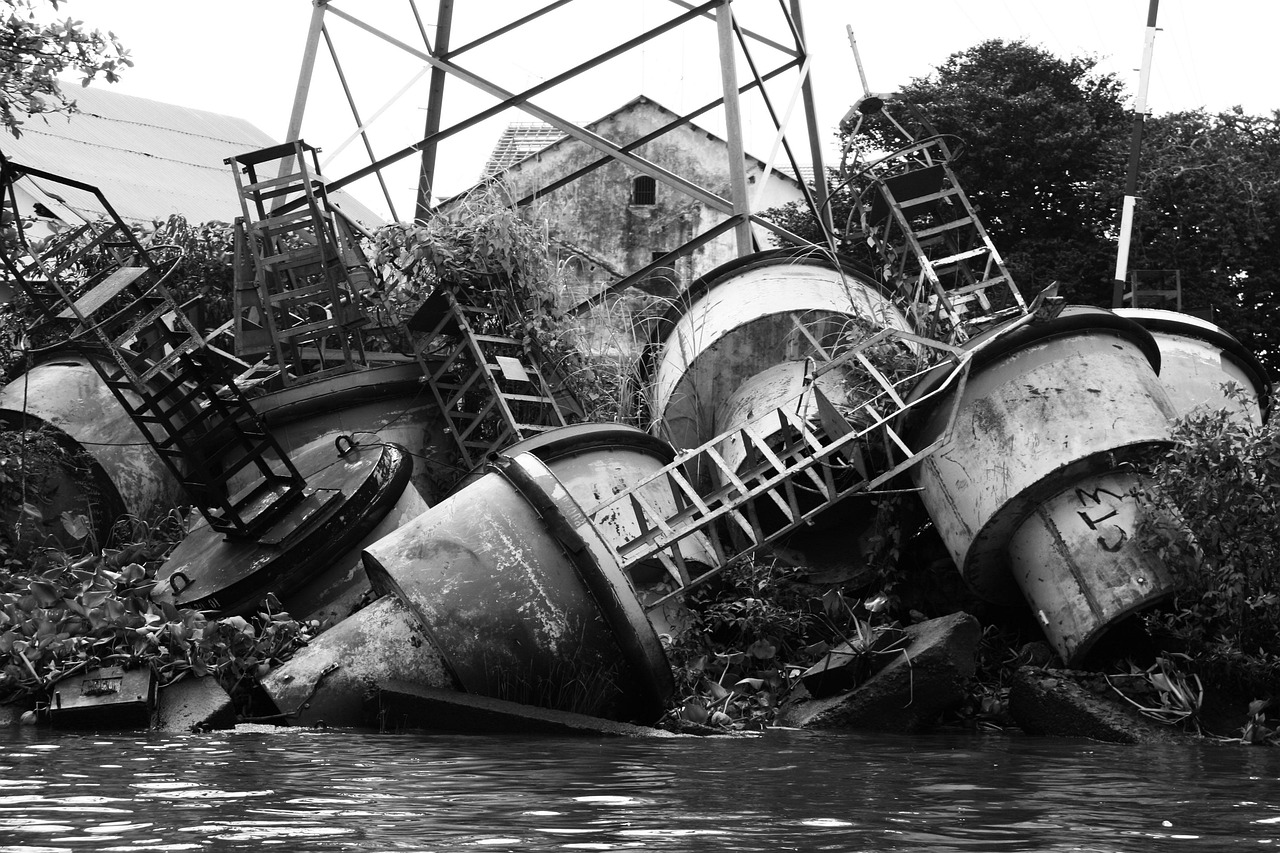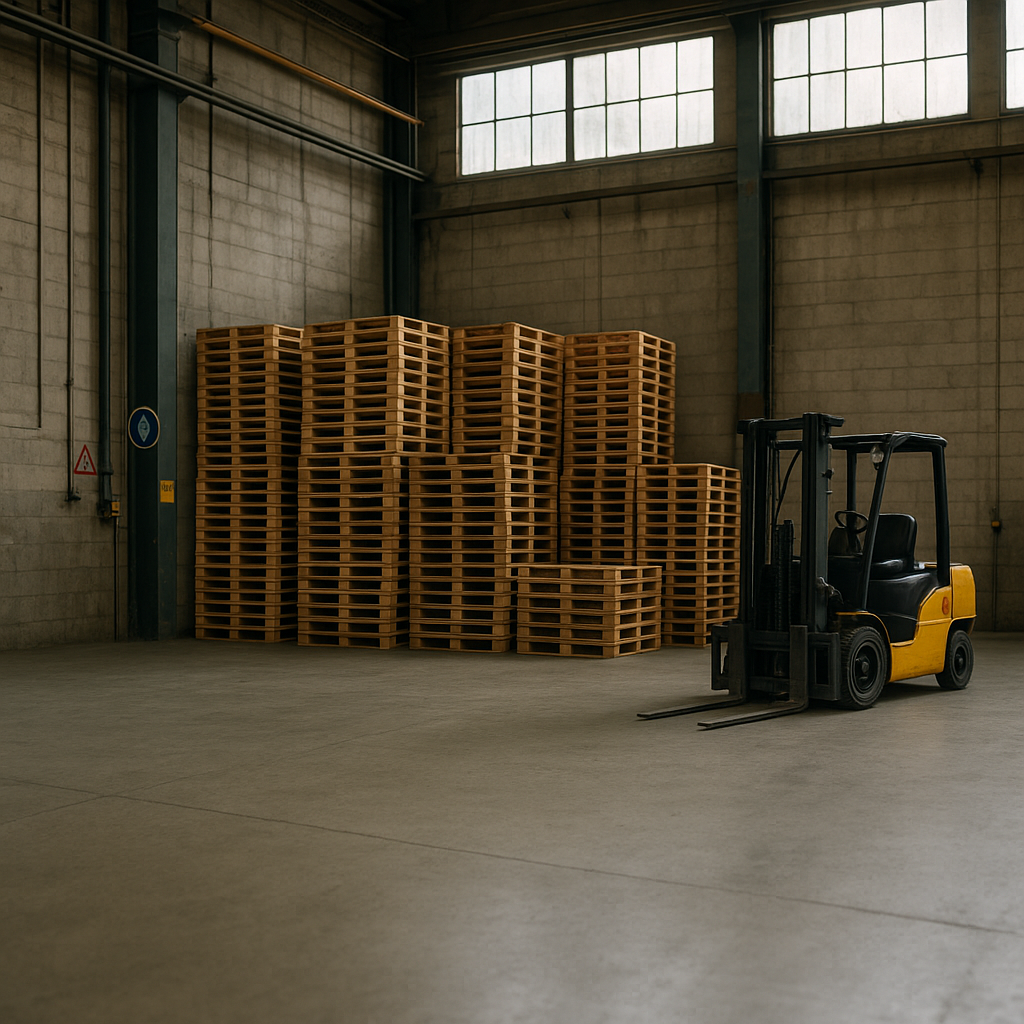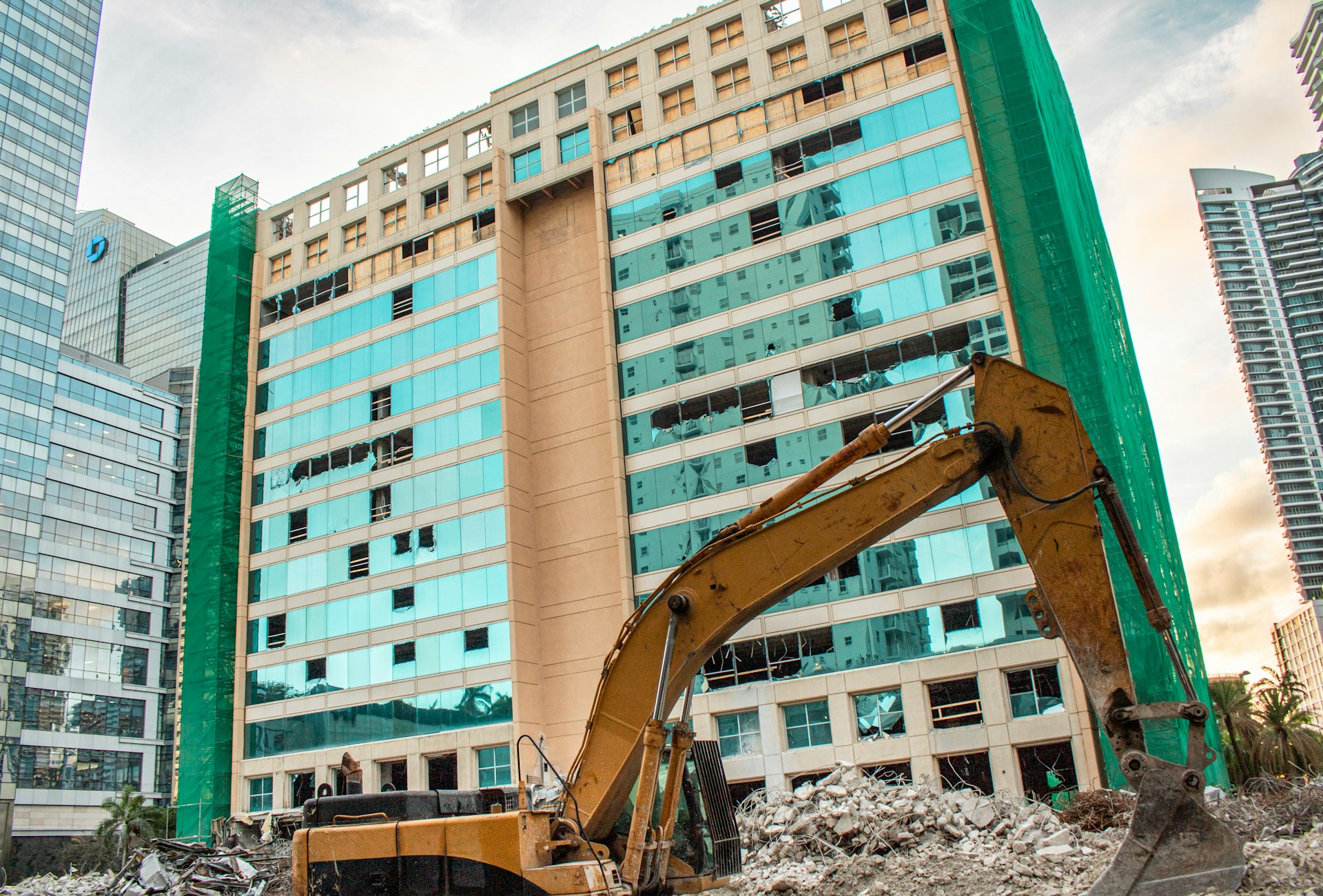5901 Botham Jean Blvd, Dallas, TX 75215
Industrial Scrap Removal: Turning Waste into Operational Value
July 6, 2025Every manufacturing facility generates leftover materials. When production lines stamp out parts, cut metal sheets, or machine components, they inevitably create excess metal that serves no immediate purpose. This is industrial scrap—valuable material that requires proper management and removal.
Industrial scrap removal is the specialized process of collecting, sorting, and processing unused metal materials from manufacturing and industrial facilities. This essential service transforms what might be considered waste into valuable resources through recycling channels. The metals typically managed include steel, aluminum, copper, brass, and other alloys remaining after production processes.
For manufacturing facilities, proper scrap removal delivers multiple immediate benefits. It reclaims valuable floor space that would otherwise be consumed by accumulating waste materials. Space efficiency directly translates to operational effectiveness, allowing for streamlined workflows and potentially increased production capacity. Beyond the physical benefits, scrap removal contributes significantly to sustainability initiatives, which are increasingly driving business decisions in 2024.
What Types of Scrap Metal are Typically Removed?

Industrial scrap removal services manage a wide range of metal materials. These metals are categorized by their composition and properties, facilitating efficient recycling processes. Understanding these categories helps businesses sort their scrap before collection.
Ferrous Metals
Ferrous metals contain iron as their primary component. These metals are magnetic and often exhibit high tensile strength, making them valuable in many industries. The recycling process for ferrous metals typically involves shredding, melting, and reforming into new products.
- Steel – Found in construction materials, machinery parts, automotive components, and containers
- Iron – Common in pipes, automotive parts, and older machinery
- Carbon steel – Used in pipes, rebar, and industrial equipment
- Stainless steel – Present in kitchen equipment, medical devices, and architectural elements
Non-Ferrous Metals
Non-ferrous metals don’t contain iron as their primary component. They are typically more valuable per pound than ferrous metals due to their properties and relative scarcity. These metals are non-magnetic and often have greater resistance to corrosion.
- Aluminum – Found in beverage cans, siding, gutters, and window frames
- Copper – Common in wiring, plumbing fixtures, and electronic components
- Brass – Present in plumbing valves, decorative items, and musical instruments
- Bronze – Used in bearings, sculptures, and specialized industrial components
Specialty Scrap Items
In addition to basic metal types, industrial scrap removal services also handle more complex items containing various metals and other materials. These items often require specialized processing techniques to separate valuable components.
- Electronic scrap – Computers, circuit boards, phones, and other electronic devices
- Old appliances – Refrigerators, washing machines, microwave ovens, and other household items
- Industrial equipment – Manufacturing machinery, processing equipment, and specialized tools
- Automotive components – Catalytic converters, radiators, batteries, and engine parts
Industrial scrap removal companies employ various methods to process different metal types, including sorting, shredding, melting, and purification. The metals are then transformed into ingots or other forms that manufacturers can use to make new products.
| Metal Type | Recycling Value (Approximate Price per Pound) |
| Steel | $0.10 to $0.30 |
| Aluminum | $0.65 to $1.07 |
| Copper | $2.13 to $2.43 |
| Stainless Steel | $0.32 to $1.64 |
| Brass | $1.59 to $1.76 |
| Lead | $0.41 to $0.73 |
The success of the recycling process largely depends on the proper sorting and identification of metal types. Most industrial scrap removal services offer guidance to help businesses categorize their scrap metals accurately before collection or provide sorting services as part of their removal process.
How Does the Industrial Scrap Removal Process Work?
Industrial scrap removal is a carefully organized process designed to manage waste materials efficiently while maximizing value recovery. Modern scrap management involves several key stages to ensure materials are properly handled from collection to processing.
Initial Assessment and Planning
The scrap removal process begins with a detailed evaluation of the materials requiring disposal. Recycling specialists assess the types and volumes of scrap to develop a customized removal plan suited to the specific needs of each facility.
This assessment determines the necessary equipment, scheduling requirements, and the most efficient removal methods. For manufacturing facilities with continuous scrap generation, this planning phase is crucial for establishing ongoing management solutions.
On-Site Services
The core of industrial scrap removal occurs directly at your facility through on-site services. These typically include:
- Scrap weighing: Certified scales ensure accurate measurement of materials for proper documentation and payment.
- Quality inspection: Materials undergo tests for contamination, including radiation detection and verification of metal composition.
- Storage solutions: Appropriate containers, bins, or trailers are placed to collect and store materials before transport.
- Loading assistance: Specialized equipment and trained personnel safely load materials for transport.
These on-site components minimize disruption to daily operations while ensuring all materials are properly handled and accounted for.
Processing and Material Handling
Once collected, scrap materials require processing before they can be recycled. This phase may occur on-site or at a dedicated processing facility, depending on volume and material types.
Processing activities include dismantling, decommissioning, crushing, and shearing. For large equipment or machinery, specialized techniques like lancing or baling may be used to reduce size and prepare materials for recycling.
Material separation is another critical step. Ferrous metals (containing iron) are separated from non-ferrous metals (such as aluminum, copper, and brass) using magnetic separation and other techniques.
| Metal Type | Processing Method |
|---|---|
| Aluminum | Melting in reverberatory or induction furnaces, purification using chlorine gas or nitrogen bubbling |
| Steel | Melting in electric arc furnaces, shredding |
| Copper | Shredding, melting, and purification |
| Iron | Magnetically separated, melting |
Transportation and Logistics Management
Efficient transportation is essential to the scrap removal process. Comprehensive logistics management ensures materials move smoothly from your facility to their next destination.
Recycling providers coordinate transportation using various methods, including trucks, railcars, and even cargo ships for larger operations. This might involve scheduled pickups at regular intervals or on-demand service based on your production schedule.
For maximum efficiency, many providers offer mill-direct shipments. This approach transports processed materials directly to mills or manufacturing facilities for recycling, reducing handling steps and transportation costs.
Documentation and Compliance
Throughout the scrap removal process, proper documentation is maintained to ensure regulatory compliance and provide transparency. This includes weight tickets, material classification, and environmental compliance records.
Reputable recycling providers handle permitting requirements and ensure all activities meet Environmental Protection Agency (EPA) guidelines. This documentation also supports sustainability reporting and waste reduction initiatives for your business.
The best industrial scrap removal partners provide real-time access to information through customer portals, allowing you to track your materials and access important records whenever needed.
What Are the Benefits of Industrial Scrap Removal?

Industrial scrap removal transforms what many businesses view as waste into valuable opportunities. Beyond simple cleanup, proper scrap management delivers tangible benefits that impact both operational efficiency and environmental footprint.
Cost Savings and Revenue Generation
Properly managed scrap creates direct financial benefits for businesses. By selling recyclable materials like copper, brass, aluminum, and steel to recycling facilities, companies convert waste into income streams.
Space reclamation represents another significant financial advantage. Manufacturing facilities and industrial sites often dedicate valuable square footage to storing unused equipment or scrap materials. Professional removal services free up this space for productive activities, increasing operational capacity without facility expansion.
The financial impact extends to reduced disposal costs. Traditional waste disposal methods carry considerable fees, particularly for industrial materials. Recycling programs typically cost less than landfill disposal, creating immediate savings in waste management budgets.
Environmental Sustainability
Industrial scrap removal plays a crucial role in reducing environmental impact. Recycling metal scraps requires significantly less energy than processing raw materials. For example, recycling aluminum uses about 95% less energy than producing it from bauxite ore.
This process directly contributes to greenhouse gas reduction. Less energy consumption means fewer emissions from manufacturing processes. Additionally, keeping materials out of landfills prevents potential soil and water contamination from industrial components.
Resource conservation represents another key benefit. Every ton of metal recycled preserves natural resources that would otherwise be extracted through mining or drilling operations. This conservation helps maintain ecosystem integrity in resource-rich regions.
| Benefit | Description |
| Energy Savings | Recycled aluminum uses 95% less energy compared to producing new aluminum from raw ore. |
| Greenhouse Gas Emission Reduction | Recycling metals can significantly reduce the emissions associated with raw material extraction and processing. |
| Pollution Reduction | By preventing industrial scrap from being dumped in landfills, recycling reduces soil and water pollution. |
| Natural Resource Conservation | Recycling reduces the need for mining, conserving resources like iron, aluminum, and copper. |
| Landfill Waste Reduction | Recycles tons of industrial scrap metal, reducing the volume taking up landfill space. |
| Circular Economy Promotion | Encourages the reuse of materials, minimizing waste and enhancing sustainability. |
Regulatory Compliance and Corporate Responsibility
Many jurisdictions enforce strict regulations regarding industrial waste disposal. Proper scrap removal helps businesses avoid penalties associated with improper disposal practices.
Companies actively engaged in recycling can leverage these efforts in sustainability reporting. This commitment resonates with environmentally conscious consumers and business partners who increasingly consider environmental impact in their purchasing decisions.
Professional industrial scrap removal services ensure compliance with all environmental regulations. They understand proper handling procedures for potentially hazardous materials and maintain the necessary documentation to demonstrate regulatory adherence.
Operational Improvements
Removing accumulated scrap reduces workplace hazards. Cluttered spaces with metal scraps create risks for employees, including tripping hazards and potential injuries from sharp edges.
Many facilities report improved workflow efficiency after scrap removal. Clear pathways and organized workspaces allow for more efficient movement of materials and personnel throughout the facility.
The process of evaluating and removing scrap often reveals opportunities for process improvements. Companies frequently identify equipment that needs maintenance or replacement and potential changes to production methods that reduce waste generation at the source.
Conclusion: The Impact of Effective Industrial Scrap Management

Effective industrial scrap management provides significant benefits to businesses across all sectors. By implementing proper waste handling protocols, companies can achieve substantial cost reductions while contributing to environmental conservation. Strategically managing industrial scrap materials transforms what was once considered waste into valuable assets that can generate new revenue streams and optimize operational efficiency.
The environmental advantages of proper scrap management extend beyond individual businesses. Reducing landfill usage, conserving natural resources, and decreasing greenhouse gas emissions contribute to a more sustainable future. These initiatives align with increasing regulatory requirements while demonstrating corporate responsibility to customers, partners, and stakeholders who value environmental stewardship.
Ready to transform your waste management approach into a strategic business advantage? Contact Okon Recycling at 214-717-4083 for specialized industrial scrap removal services tailored to your specific operational needs.
